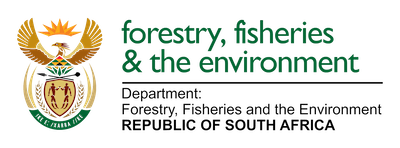
by Ria Olivier | Mar 4, 2024 | APECSSA, Fellowship, Research, SANAP, SANAP Student
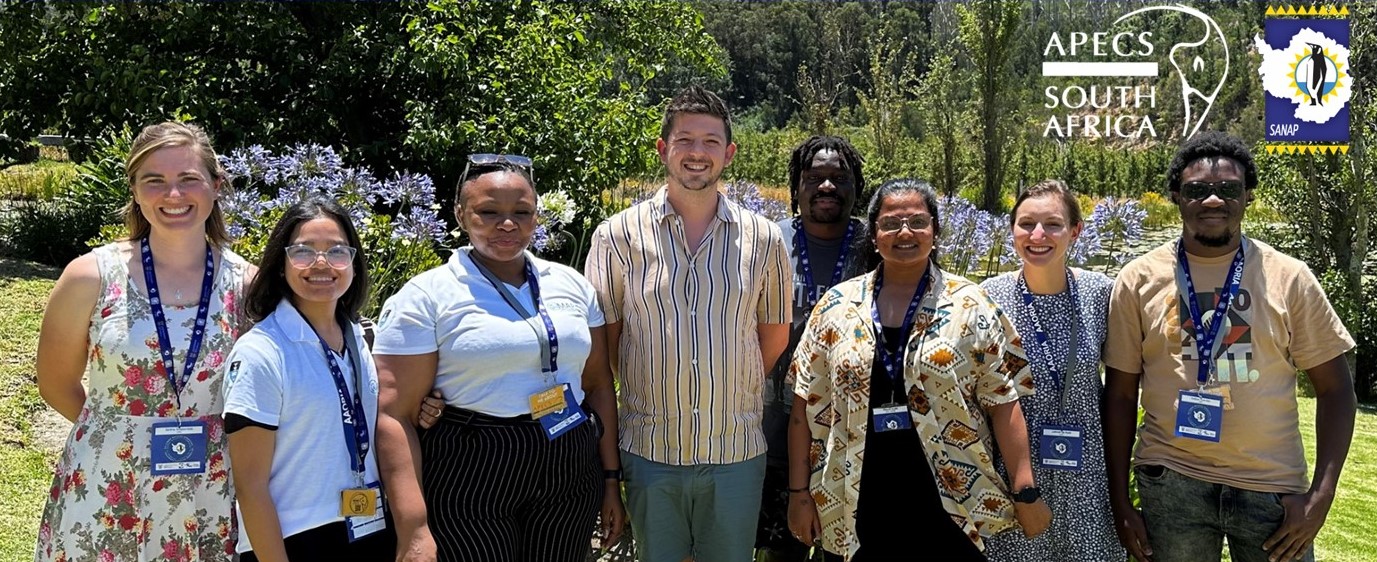 For the first time ever at a SANAP Symposium an Early Career Event was organised by APECS-South Africa. The event was an opportunity to encourage ECRs to become members and to socialise with current members, in fact it was the first time that the current committee had all managed to meet in person and not over zoom. (Above group photo of APECSSA committee members 2024 that were able to attend the Symposium)
For the first time ever at a SANAP Symposium an Early Career Event was organised by APECS-South Africa. The event was an opportunity to encourage ECRs to become members and to socialise with current members, in fact it was the first time that the current committee had all managed to meet in person and not over zoom. (Above group photo of APECSSA committee members 2024 that were able to attend the Symposium)
 APECS-South Africa also wanted to use this time to engage in a community survey with ECRs to discuss important topics around career development and community inclusion. This survey was being conducted anonymously in real time and so provided a safe space for ECRs to raise any concerns they felt within the SANAP community. Most importantly, APECS-South Africa was able to then relay the results of this survey to the PIs and senior leadership of the SANAP community. (Above words used by ECRs to describe their journey, skills they need and what is missing in the organisation)
APECS-South Africa also wanted to use this time to engage in a community survey with ECRs to discuss important topics around career development and community inclusion. This survey was being conducted anonymously in real time and so provided a safe space for ECRs to raise any concerns they felt within the SANAP community. Most importantly, APECS-South Africa was able to then relay the results of this survey to the PIs and senior leadership of the SANAP community. (Above words used by ECRs to describe their journey, skills they need and what is missing in the organisation)

 APECS-South Africa plans to continue running this survey going forward at future SANAP Symposiums so that ECRs feel like their voice is being heard and help the SANAP Community become better and more inclusive for everyone. During the workshop ECRs were able to respond to many questions (above ex). If you as an ECR has not yet responded click on the QR Code.
APECS-South Africa plans to continue running this survey going forward at future SANAP Symposiums so that ECRs feel like their voice is being heard and help the SANAP Community become better and more inclusive for everyone. During the workshop ECRs were able to respond to many questions (above ex). If you as an ECR has not yet responded click on the QR Code.
Meet APECSSA 2024 Committee
Full feedback presentation available
(Text, Slides and Group Photo by Tommy Ryan-Keogh.)
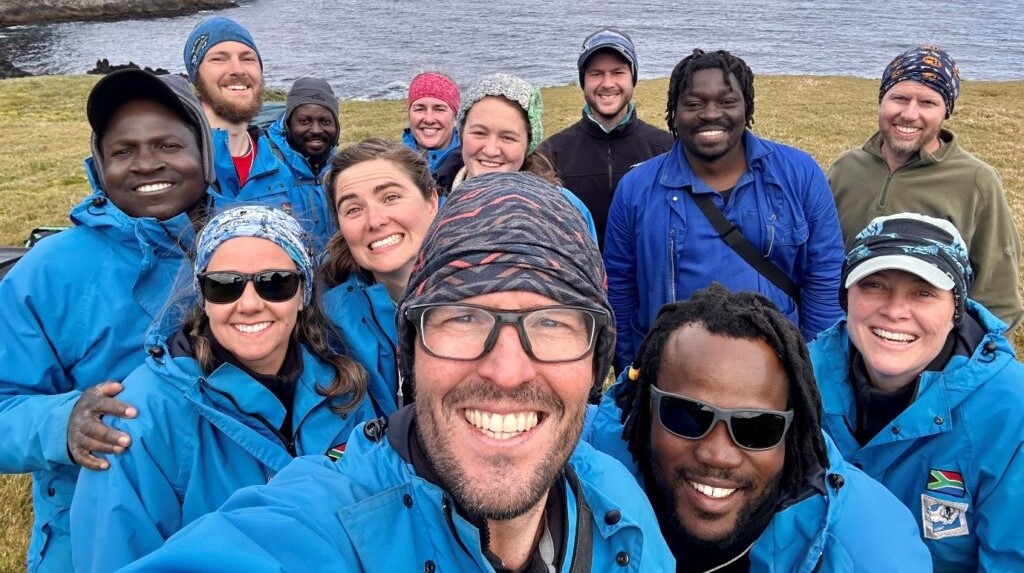
by Ria Olivier | Mar 1, 2024 | Data Management, Environment, Prince Edward Island, Research, SANAP
 A session has been included in the 6th SANAP symposium to include the Prince Edward Island scientific survey members as they were arriving late on the 29 November. As a cross discipline on Data Management and the Summer Survey Participants. Christel Hansen chaired the session ‘Data and frameworks in the support of polar research’.
A session has been included in the 6th SANAP symposium to include the Prince Edward Island scientific survey members as they were arriving late on the 29 November. As a cross discipline on Data Management and the Summer Survey Participants. Christel Hansen chaired the session ‘Data and frameworks in the support of polar research’.
 Above(l-r): Newi Makhado, Janine Schoombie, Chris Oosthuizen, David Hedding, Stefan Schoombie
Above(l-r): Newi Makhado, Janine Schoombie, Chris Oosthuizen, David Hedding, Stefan Schoombie
- Newi Makhado: Ecoregionalisation of the pelagic zone in the Subantarctic and subtropical Indian Ocean.
- Janine Schoombie: Studies of wind, plants and seabirds on Marion Island. (Abstract)
- Chris Oosthuizen: Marine predators: ecosystem sentinels that help inform Southern Ocean management. (Abstract)
- David Hedding: A geospatial database for the sub-Antarctic Prince Edward Islands. (Abstract)
- Stefan Schoombie: Non-breeding distribution and moulting activity of Blue Petrels (Halobaena caerulea) breeding on sub-Antarctic Marion Island.
- Christel Hansen: Consistent mapping and geospatial information representation in the Antarctic and sub-Antarctic: why South Africans should care. (Abstract)
 Above: Scientific Survey members taken on Prince Edward Island. Azwianewi Makhado, Maëlle Connan, David Hedding, Charlene Janion-Scheepers , Rowan Jordaan, Makhudu Masotla, Thomas Mufanadzo, Chris Oosthuizen, Liezl Pretorius, Janine Schoombie, Stefan Schoombie, Yinhla Shihlomule, and Elsa van Ginkel. Read more
Above: Scientific Survey members taken on Prince Edward Island. Azwianewi Makhado, Maëlle Connan, David Hedding, Charlene Janion-Scheepers , Rowan Jordaan, Makhudu Masotla, Thomas Mufanadzo, Chris Oosthuizen, Liezl Pretorius, Janine Schoombie, Stefan Schoombie, Yinhla Shihlomule, and Elsa van Ginkel. Read more

by Ria Olivier | Mar 1, 2024 | Antarctica, Engineering, Research, SANAP, SANAP Student

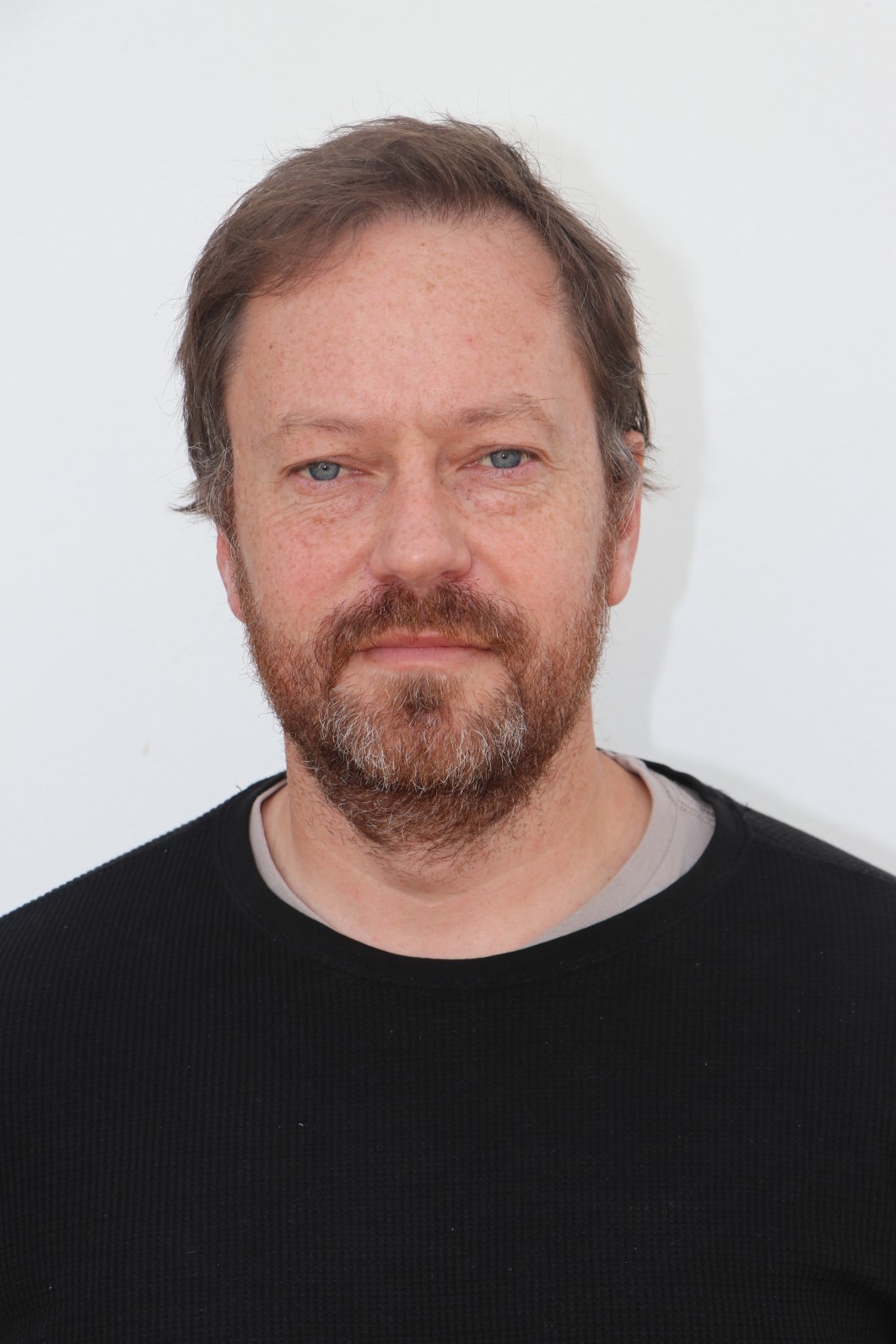
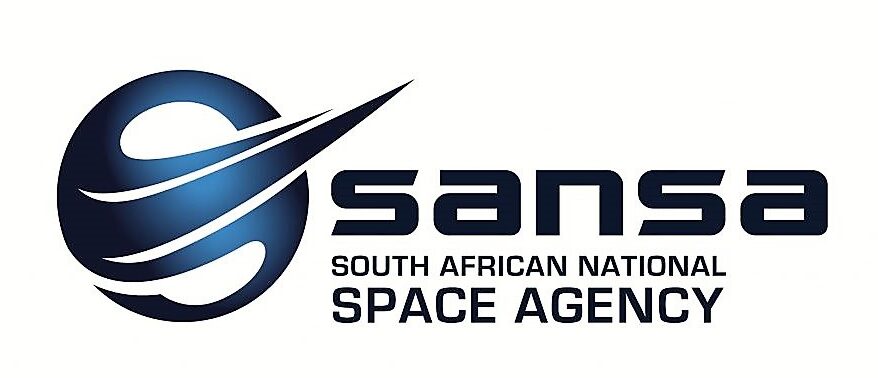 The last session on research themes were earth observations within the Marine and Antarctic Research Strategy research themes. The session on Space Physics was chaired by Dr Stefan Lotz. Dr Michael Kosch was not available in person but joined online with his presentation. (Above: group photo of presenters). All the presenters are from the South African National Space Agency (SANSA) based in Hermanus.
The last session on research themes were earth observations within the Marine and Antarctic Research Strategy research themes. The session on Space Physics was chaired by Dr Stefan Lotz. Dr Michael Kosch was not available in person but joined online with his presentation. (Above: group photo of presenters). All the presenters are from the South African National Space Agency (SANSA) based in Hermanus.
 Above(l-r): Michael Kosch, Tshimangadzo M. Matamba, Nkosinathi Masango, Pierre Cilliers, Alicreance Hiyadutuje
Above(l-r): Michael Kosch, Tshimangadzo M. Matamba, Nkosinathi Masango, Pierre Cilliers, Alicreance Hiyadutuje
- Dr Michael Kosch: How blue skies auroral research created and saved billions. (abstract)
- Tshimangadzo M. Matamba: Monitoring the Impact of Space Weather using South African Near-Real Time Space Weather GNSS Products. (abstract)
- Nkosinathi Masango: Analysis of ionospheric storm effects based on GPS and ionosonde data during geomagnetic storms. (abstract)
- Dr Pierre Cilliers: The long-term variation of the geomagnetic field in Antarctica as measured in Hermanus, Maitri and at SANAE-IV since 2007. (abstract)
- Alicreance Hiyadutuje: Sporadic E layer altitude modulated by the Traveling Ionospheric Disturbances at high latitudes. (abstract)
- Dr Stefan Lotz: Observation of powerful gamma ray burst GRB221009A from Marion Island. (abstract)
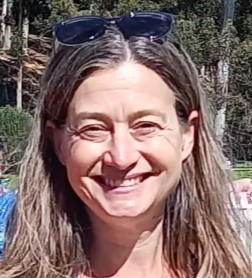
by Ria Olivier | Feb 29, 2024 | Biogeochemistry, geochemistry, Research, SA Agulhas II, SANAP, SANAP Student, South Atlantic, Southern Ocean
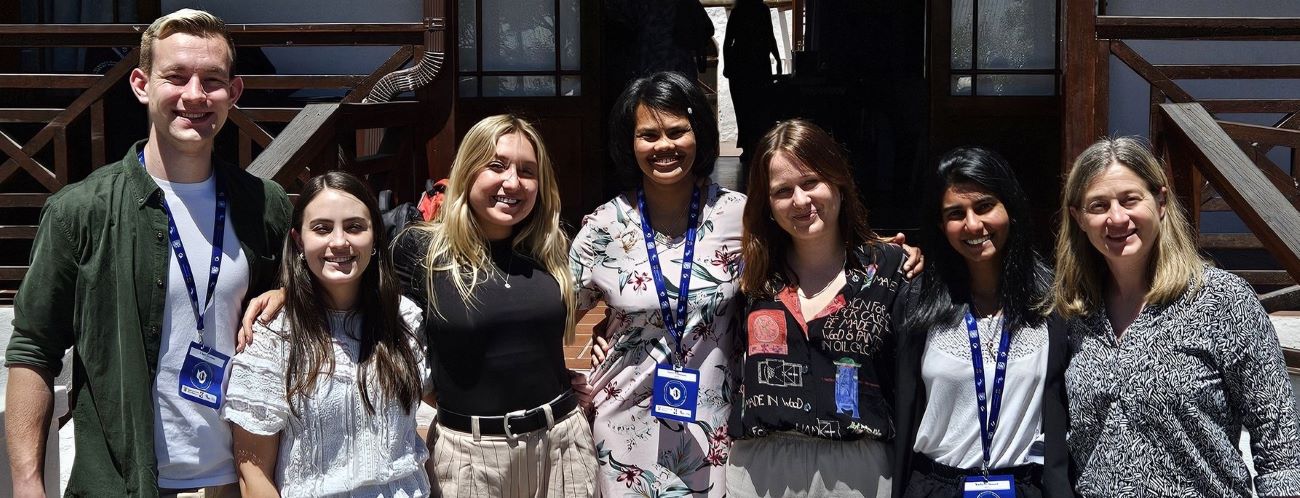
 The third session within the Marine and Antarctic Research Strategy research theme: Oceans and marine ecosystems under global change chaired by Suzanne Fietz of Stellenbosch University. The presentations resort under the title ‘Southern Ocean productivity: drivers and consequences. The session was introduced by Susanne Fietz and the alignment to MARS. (Above: group photo – Photo credit Suzanne Fietz)
The third session within the Marine and Antarctic Research Strategy research theme: Oceans and marine ecosystems under global change chaired by Suzanne Fietz of Stellenbosch University. The presentations resort under the title ‘Southern Ocean productivity: drivers and consequences. The session was introduced by Susanne Fietz and the alignment to MARS. (Above: group photo – Photo credit Suzanne Fietz)
 Above (l-r): Liam Quinlan, Emtia Wium, Johan Viljoen, Asmita Singh, Jared Walsh (Stellenbosch University)
Above (l-r): Liam Quinlan, Emtia Wium, Johan Viljoen, Asmita Singh, Jared Walsh (Stellenbosch University)
- Liam Quinlan: Characterising phytoplankton communities: A Southern Ocean case study of environmental coupling. (Abstract)
- Amelia Deary: Early community development at the Southern Ocean Marginal Ice Zone. (Abstract)
- Sadiyah Rawat: The role of the island mass effect in enhancing productivity and carbon export in the Subantarctic Ocean. (Abstract)
- Emtia Wium: Impact of metals in aerosols and dust on marine phytoplankton: South Africa. (Abstract)
- Sina Wallschuss: The seasonality and origins of nitrous oxide in the Atlantic sector of the Southern Ocean. (Abstract)
- Faith February: Observations of Southern Ocean marine aerosols in Simon’s Town, False Bay. (Abstract)
- Susanne Fietz: General discussion
- Mhlangabezi Mdutyana: Nitrification in the Southern Ocean: controls, kinetics, and biogeochemical implications. (Abstract)
- Susanne Fietz: Trace metals and phytoplankton. (Abstract)
 Above (l-r): Amelia Deary, Sadiyah Rawat, Sina Wallschuss, Faith February, Mhlangabezi Mdutyana (UCT)
Above (l-r): Amelia Deary, Sadiyah Rawat, Sina Wallschuss, Faith February, Mhlangabezi Mdutyana (UCT)
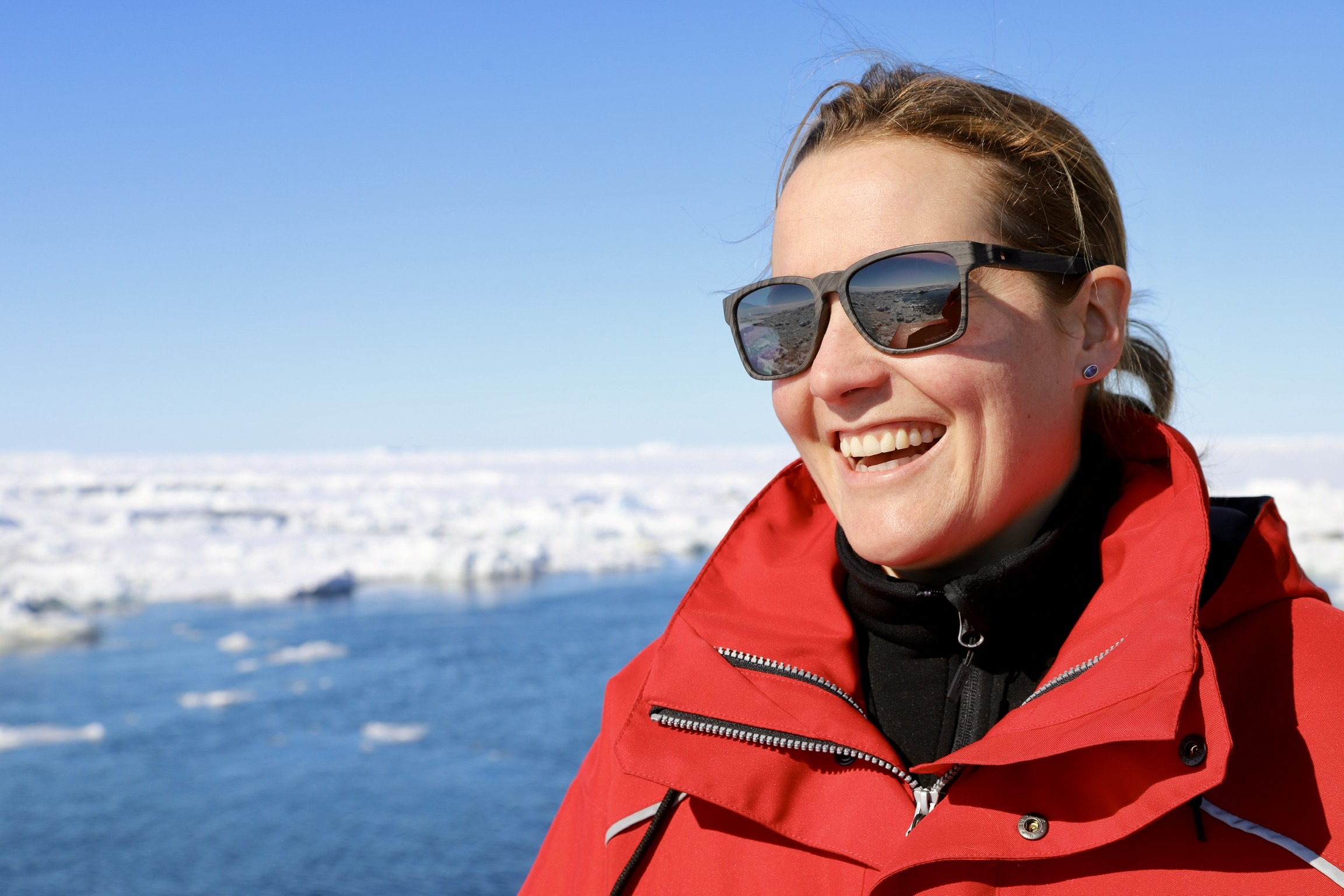
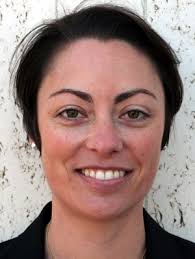 Sarah Fawcett(left) could not attend, but her and Dr Katye Altieri (right)students gave presentations during this session. Sarah Fawcett (abstract): Nanoplankton: the dominant vector for carbon export across the Atlantic Southern Ocean in spring.
Sarah Fawcett(left) could not attend, but her and Dr Katye Altieri (right)students gave presentations during this session. Sarah Fawcett (abstract): Nanoplankton: the dominant vector for carbon export across the Atlantic Southern Ocean in spring.
 Suzanne Fietz and the Stellenbosch University Earth Sciences team submitted an excellent e-poster Asmita Singh(e-poster) and Johan Viljoen (abstract) and Jared Walsh(abstract) were not able to attend the symposium in person.
Suzanne Fietz and the Stellenbosch University Earth Sciences team submitted an excellent e-poster Asmita Singh(e-poster) and Johan Viljoen (abstract) and Jared Walsh(abstract) were not able to attend the symposium in person.
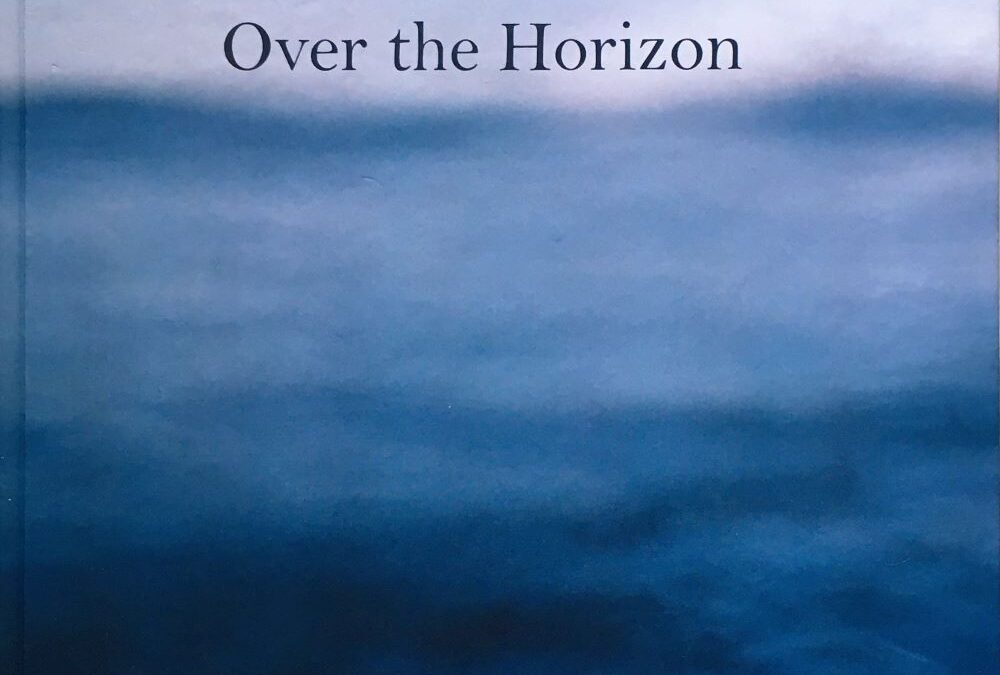
by Ria Olivier | Feb 29, 2024 | Antarctica, Legacy, Research, SANAP, SANAP Student
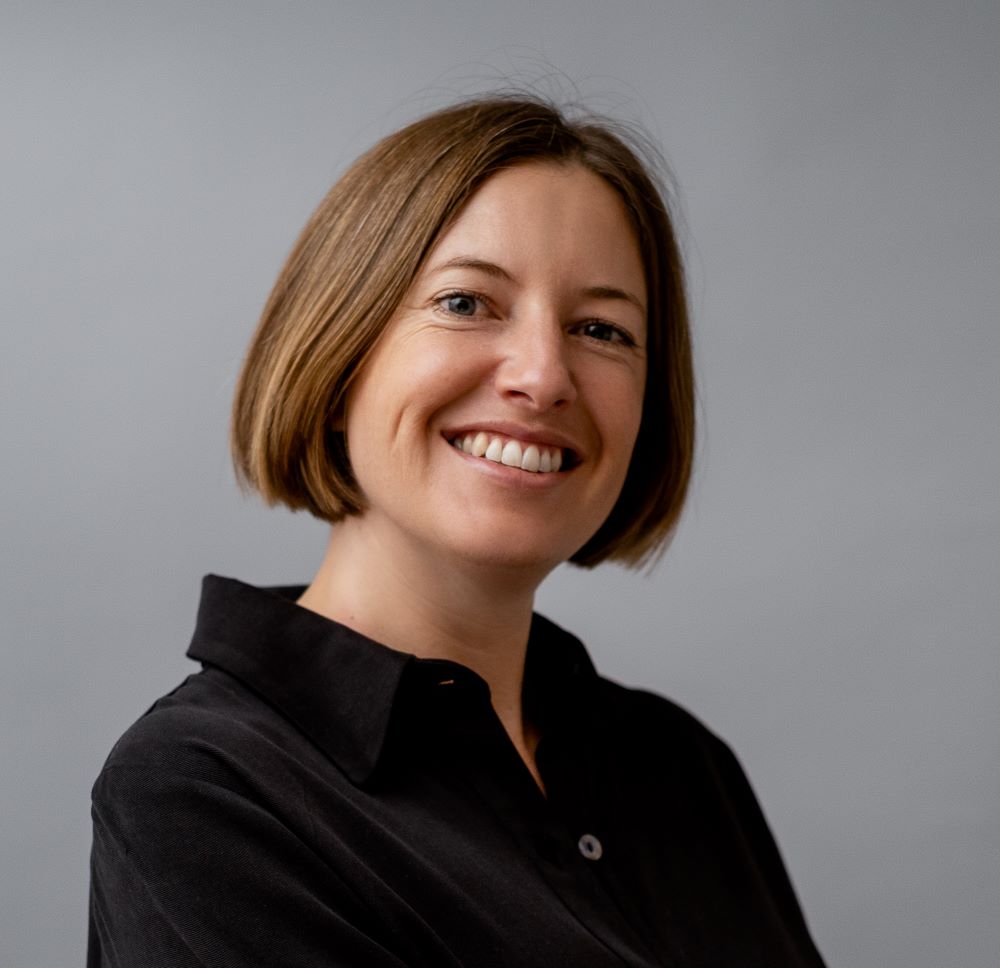 The only session on human enterprise within the Marine and Antarctic Research Strategy research themes was chaired by Charne Lavery. These presentations include humanities within the South African National Antarctic Programme. Four higher education institutions; University of Pretoria, University of Cape Town, Stellenbosch University and University of the Free State, were involved and the presentations were of a wide variety.
The only session on human enterprise within the Marine and Antarctic Research Strategy research themes was chaired by Charne Lavery. These presentations include humanities within the South African National Antarctic Programme. Four higher education institutions; University of Pretoria, University of Cape Town, Stellenbosch University and University of the Free State, were involved and the presentations were of a wide variety.
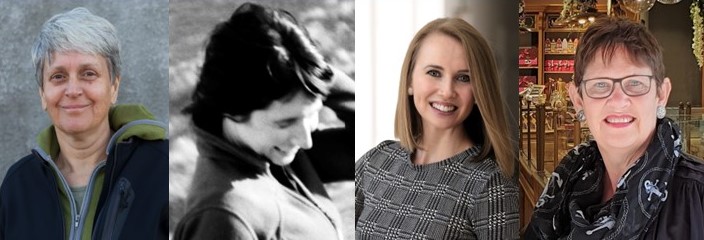 Above (l-r): Jean Brundrit, Adrienne van Eeden-Wharton, Marike Stander, Ria Olivier
Above (l-r): Jean Brundrit, Adrienne van Eeden-Wharton, Marike Stander, Ria Olivier
- Prof J Brundrit Over the Horizon: An art project in Antarctica. (Abstract)
- Dr A van Eeden-Wharton: Render | Remnant: Tracing the entangled histories of African and Antarctic whaling. (Abstract)
- Dr C Lavery: Orienting South: Looking to Antarctica and the Southern Ocean in South African literature. (Abstract)
- M Olivier: Humanities can build bridges between researchers in different fields in Antarctic research. (Abstract). Poster.
- DR M Stander et al.: Proposed project: Digitisation and preservation of Marion Island’s hut books. (Abstract). E-Poster
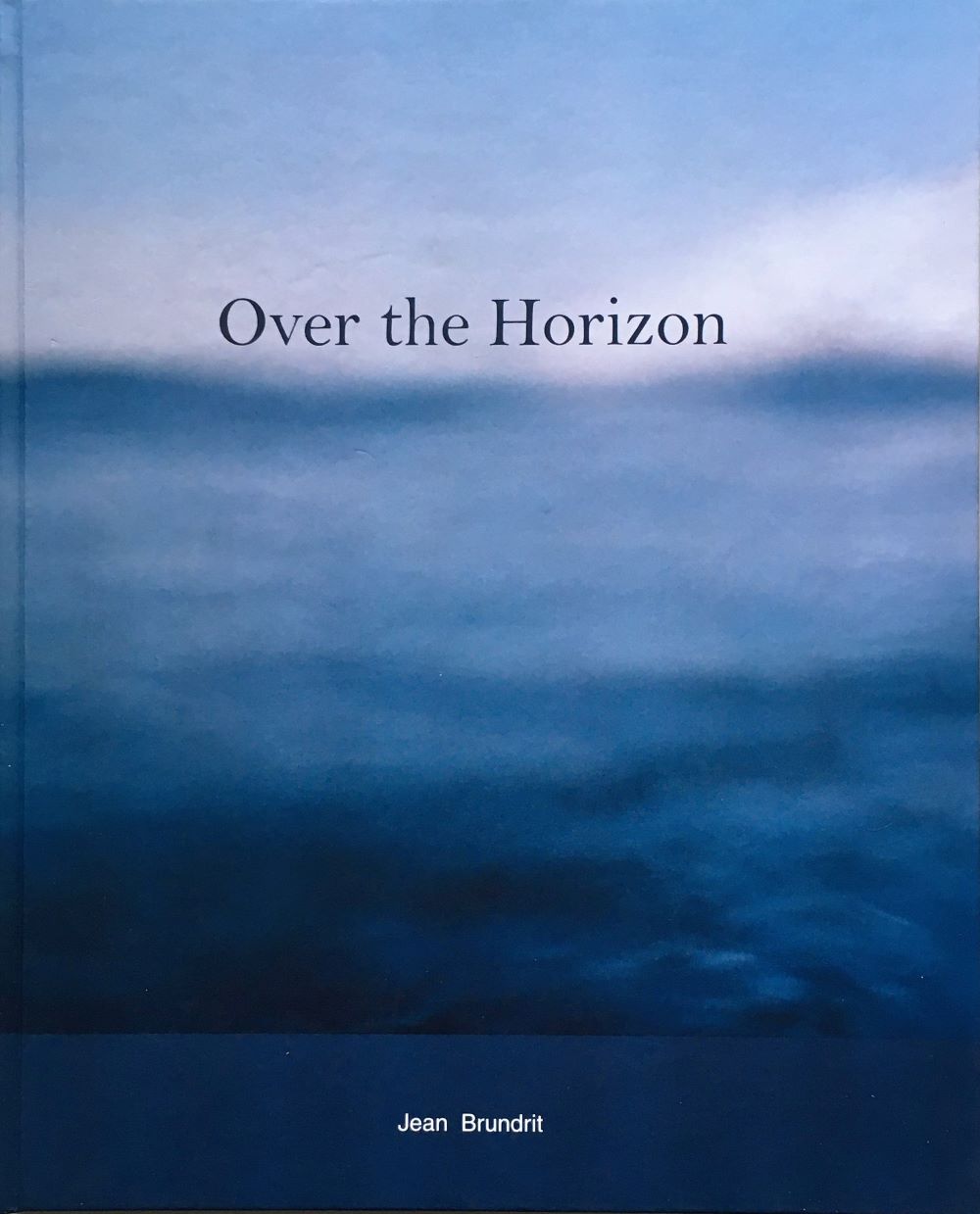 Jean Brundrit : “Over the Horison” was displayed with other publications by the Antarctic Legacy of South Africa.
Jean Brundrit : “Over the Horison” was displayed with other publications by the Antarctic Legacy of South Africa.
 Charne added fiction titles to everyone’s reading lists.
Charne added fiction titles to everyone’s reading lists.
Alistair Mackay: It Doesn’t Have to Be This Way. “The high-tide mark is Strand Street again, just as it was before the land reclamations of the twentieth century. The waves break on the outer stone walls of the seventeenth-century Dutch Fortress, but the water is only ankle-deep along the street. He walks along the breakers in the cool ocean spray. Waves smash into foreshore skyscrapers. They ricochet off the buildings and form mesmerizing patterns as they funnel towards him over Long Street, then Adderley Street.”
Peter Wilhelm: Summer’s End. “This is a tale of South Africa in the next Ice Age. Imagine the vast desolation and beauty of Antarctica massed up against the southern mountains. To the north the highveld will be covered in permanent snow and ice. Terrifying storms will sweep across the plains between. Here our descendants will live, clinging to their humanity.”
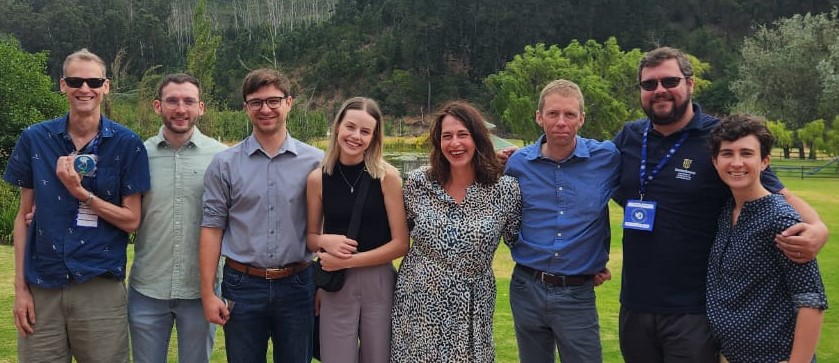
by Ria Olivier | Feb 28, 2024 | Engineering, Research, SA Agulhas II, SANAP, SANAP Student
 Another session within the Marine and Antarctic Research Strategy research theme : Innovation and engineering was chaired by Annie Bekker of the Sound and Vibration Group (SVG) at Stellenbosch university. This was an evening session done in a round table format and included international speakers from Finland. Prof Bekker gave an overview of the research and the sessions format tool on a round table/panel discussion. (Picture: Presenters of the session at the venue)
Another session within the Marine and Antarctic Research Strategy research theme : Innovation and engineering was chaired by Annie Bekker of the Sound and Vibration Group (SVG) at Stellenbosch university. This was an evening session done in a round table format and included international speakers from Finland. Prof Bekker gave an overview of the research and the sessions format tool on a round table/panel discussion. (Picture: Presenters of the session at the venue)
 Above (l-r): Annie Bekker, Gerhard Durandt, Chante Van der Spuy, Nico de Koker
Above (l-r): Annie Bekker, Gerhard Durandt, Chante Van der Spuy, Nico de Koker
- Annie Bekker SA Agulhas II – Flagship for vessel 4.0. (Abstract)
- Gerhard Durandt The Development of a Structural Digital Twin for the SA Agulhas II. (Abstract)
- Chante Van der Spuy The Classification of Multi-Impact Events by the Application of Inverse Methods and Machine Learning. (Abstract)
- Nico de Koker Inversion and Extreme Value Analysis of Ice Loading on Propulsion Shaft of the SA Agulhas II. (Abstract)
 Above(l-r): Micaela Melim, Ben Steyn, Brendon Nickerson, Nicole Taylor
Above(l-r): Micaela Melim, Ben Steyn, Brendon Nickerson, Nicole Taylor
- Micaela Melim Expanding the Capabilities of Mariner 4.0: A human-centred monitoring and research tool. (Abstract)
- Ben Steyn A Longitudinal Study of the Open-Water Performance of an Ice-Class Vessel. (Abstract)
- Brendon Nickerson Inverse calculations of ice impacts on propulsion machinery. (Abstract)
- Nicole Taylor The berth of Mariner 4.0: A human-centred monitoring and research tool. (Abstract)
 International speakers join the session and Sarah Nicholson of SOCCO present on robotics innovation. JP Barnard gave a presentation on data management during the cross-theme session chaired by Anne Treasure on day 1. Above(l-r): Jukka Tuhkuri, Miko Lensu, Sarah Nicholson, JP Barnard
International speakers join the session and Sarah Nicholson of SOCCO present on robotics innovation. JP Barnard gave a presentation on data management during the cross-theme session chaired by Anne Treasure on day 1. Above(l-r): Jukka Tuhkuri, Miko Lensu, Sarah Nicholson, JP Barnard
- Jukka Tuhkuri Ice Load measurement and ice condition monitoring onboard S.A. Agulhas II. (Abstract)
- Miko Lensu Sea ice research of Finnish Meteorological Institute. (Abstract)
- Sarah Nicholson South African Robotics and Ocean Technology Innovation Centre (SA-RobOTIC). (Abstract)

 For the first time ever at a SANAP Symposium an Early Career Event was organised by APECS-South Africa. The event was an opportunity to encourage ECRs to become members and to socialise with current members, in fact it was the first time that the current committee had all managed to meet in person and not over zoom. (Above group photo of APECSSA committee members 2024 that were able to attend the Symposium)
For the first time ever at a SANAP Symposium an Early Career Event was organised by APECS-South Africa. The event was an opportunity to encourage ECRs to become members and to socialise with current members, in fact it was the first time that the current committee had all managed to meet in person and not over zoom. (Above group photo of APECSSA committee members 2024 that were able to attend the Symposium) APECS-South Africa also wanted to use this time to engage in a community survey with ECRs to discuss important topics around career development and community inclusion. This survey was being conducted anonymously in real time and so provided a safe space for ECRs to raise any concerns they felt within the SANAP community. Most importantly, APECS-South Africa was able to then relay the results of this survey to the PIs and senior leadership of the SANAP community. (Above words used by ECRs to describe their journey, skills they need and what is missing in the organisation)
APECS-South Africa also wanted to use this time to engage in a community survey with ECRs to discuss important topics around career development and community inclusion. This survey was being conducted anonymously in real time and so provided a safe space for ECRs to raise any concerns they felt within the SANAP community. Most importantly, APECS-South Africa was able to then relay the results of this survey to the PIs and senior leadership of the SANAP community. (Above words used by ECRs to describe their journey, skills they need and what is missing in the organisation)
 APECS-South Africa plans to continue running this survey going forward at future SANAP Symposiums so that ECRs feel like their voice is being heard and help the SANAP Community become better and more inclusive for everyone. During the workshop ECRs were able to respond to many questions (above ex). If you as an ECR has not yet responded click on the QR Code.
APECS-South Africa plans to continue running this survey going forward at future SANAP Symposiums so that ECRs feel like their voice is being heard and help the SANAP Community become better and more inclusive for everyone. During the workshop ECRs were able to respond to many questions (above ex). If you as an ECR has not yet responded click on the QR Code.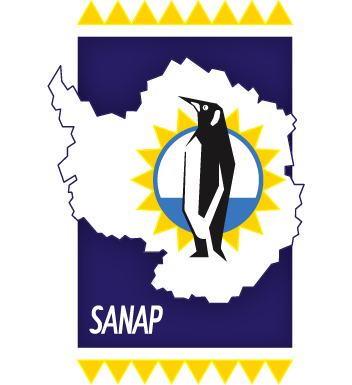

 A session has been included in the 6th SANAP symposium to include the Prince Edward Island scientific survey members as they were arriving late on the 29 November. As a cross discipline on Data Management and the Summer Survey Participants. Christel Hansen chaired the session ‘Data and frameworks in the support of polar research’.
A session has been included in the 6th SANAP symposium to include the Prince Edward Island scientific survey members as they were arriving late on the 29 November. As a cross discipline on Data Management and the Summer Survey Participants. Christel Hansen chaired the session ‘Data and frameworks in the support of polar research’.  Above(l-r): Newi Makhado, Janine Schoombie, Chris Oosthuizen, David Hedding, Stefan Schoombie
Above(l-r): Newi Makhado, Janine Schoombie, Chris Oosthuizen, David Hedding, Stefan Schoombie


 The last session on research themes were earth observations within the
The last session on research themes were earth observations within the 

 Above (l-r): Liam Quinlan, Emtia Wium, Johan Viljoen, Asmita Singh, Jared Walsh (Stellenbosch University)
Above (l-r): Liam Quinlan, Emtia Wium, Johan Viljoen, Asmita Singh, Jared Walsh (Stellenbosch University) Above (l-r): Amelia Deary, Sadiyah Rawat, Sina Wallschuss, Faith February, Mhlangabezi Mdutyana (UCT)
Above (l-r): Amelia Deary, Sadiyah Rawat, Sina Wallschuss, Faith February, Mhlangabezi Mdutyana (UCT)
 Sarah Fawcett(left) could not attend, but her and Dr Katye Altieri (right)students gave presentations during this session. Sarah Fawcett (
Sarah Fawcett(left) could not attend, but her and Dr Katye Altieri (right)students gave presentations during this session. Sarah Fawcett ( Suzanne Fietz and the Stellenbosch University Earth Sciences team submitted an excellent
Suzanne Fietz and the Stellenbosch University Earth Sciences team submitted an excellent 
 The only session on human enterprise within the
The only session on human enterprise within the  Above (l-r): Jean Brundrit, Adrienne van Eeden-Wharton, Marike Stander, Ria Olivier
Above (l-r): Jean Brundrit, Adrienne van Eeden-Wharton, Marike Stander, Ria Olivier Jean Brundrit : “Over the Horison” was displayed with other publications by the Antarctic Legacy of South Africa.
Jean Brundrit : “Over the Horison” was displayed with other publications by the Antarctic Legacy of South Africa. Charne added fiction titles to everyone’s reading lists.
Charne added fiction titles to everyone’s reading lists.
 Above (l-r): Annie Bekker, Gerhard Durandt, Chante Van der Spuy, Nico de Koker
Above (l-r): Annie Bekker, Gerhard Durandt, Chante Van der Spuy, Nico de Koker Above(l-r): Micaela Melim, Ben Steyn, Brendon Nickerson, Nicole Taylor
Above(l-r): Micaela Melim, Ben Steyn, Brendon Nickerson, Nicole Taylor International speakers join the session and Sarah Nicholson of SOCCO present on robotics innovation. JP Barnard gave a presentation on data management during the cross-theme session chaired by Anne Treasure on day 1. Above(l-r): Jukka Tuhkuri, Miko Lensu, Sarah Nicholson, JP Barnard
International speakers join the session and Sarah Nicholson of SOCCO present on robotics innovation. JP Barnard gave a presentation on data management during the cross-theme session chaired by Anne Treasure on day 1. Above(l-r): Jukka Tuhkuri, Miko Lensu, Sarah Nicholson, JP Barnard
